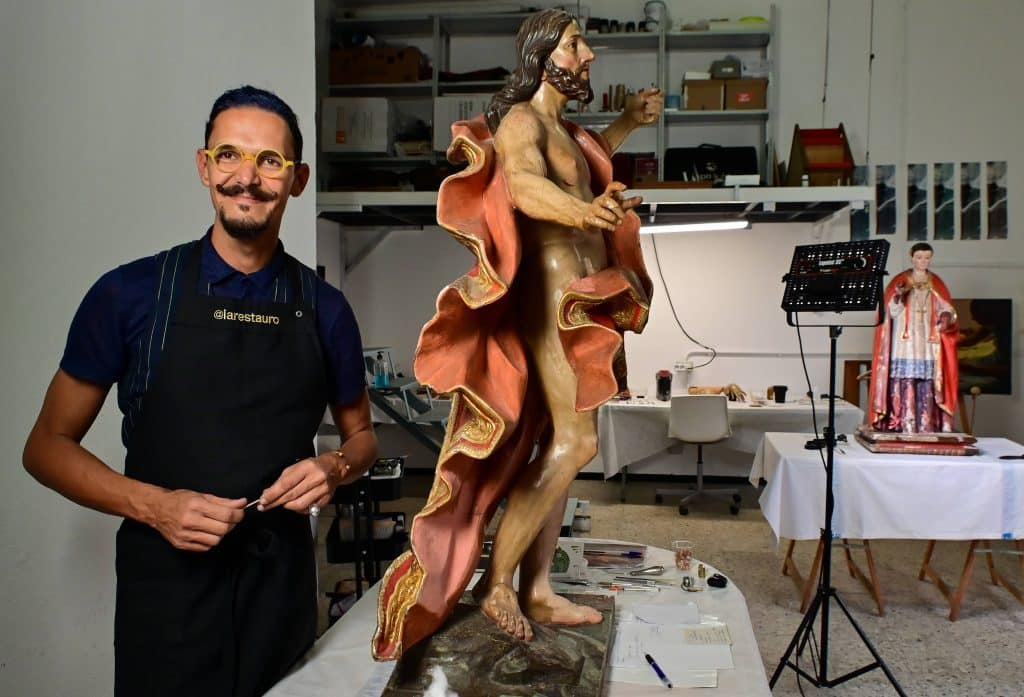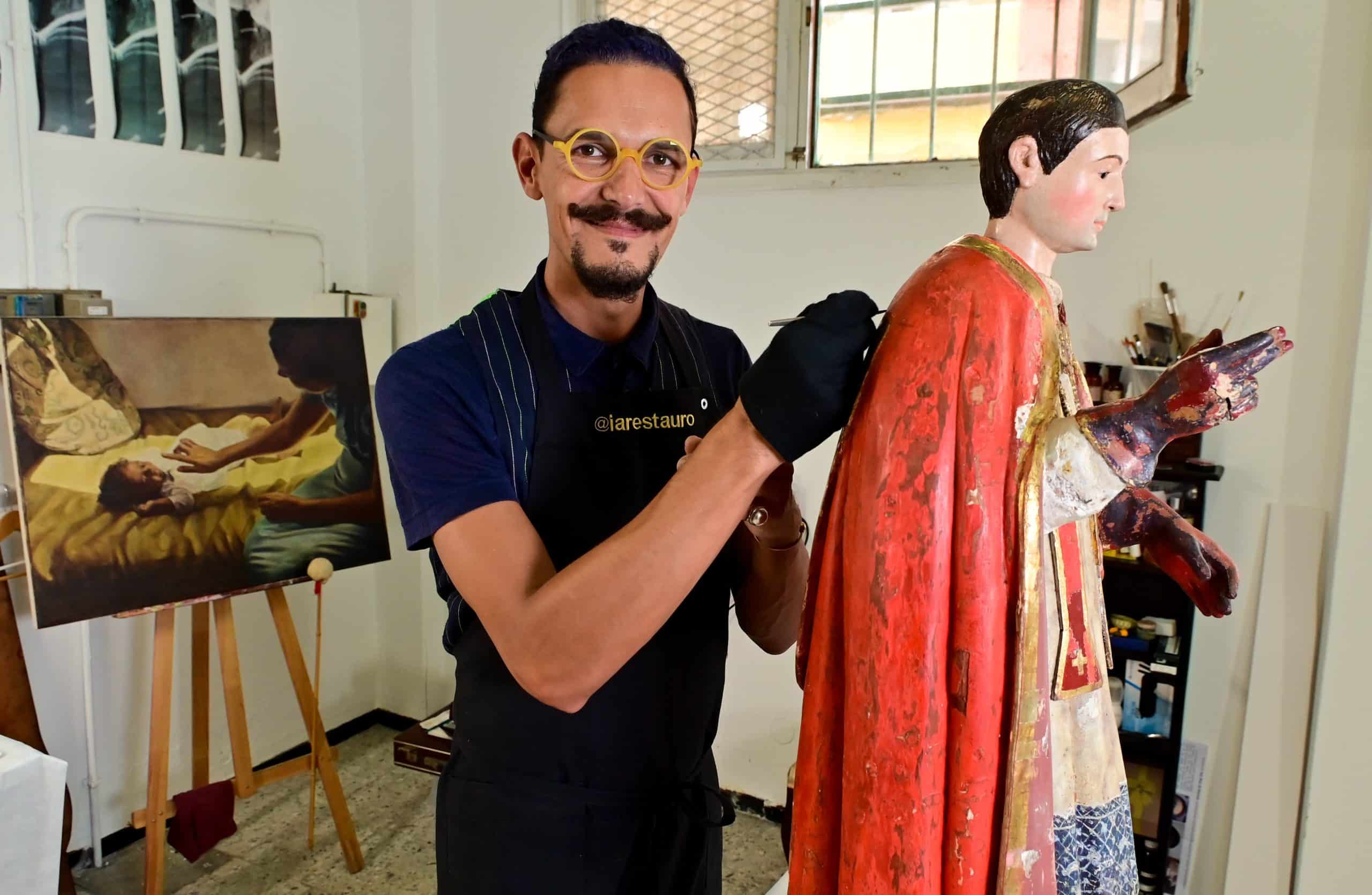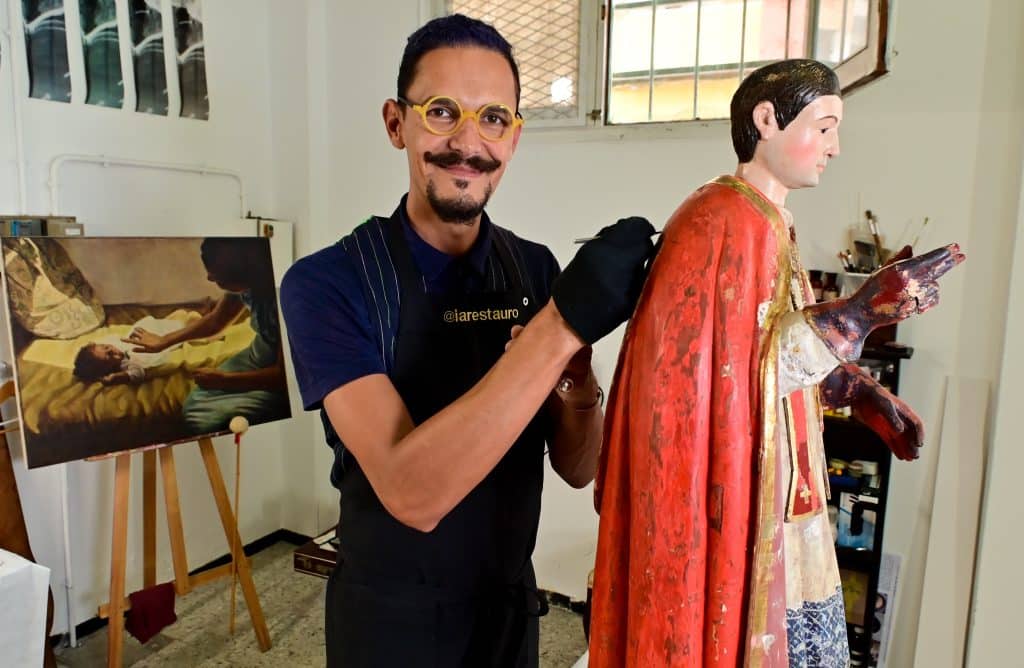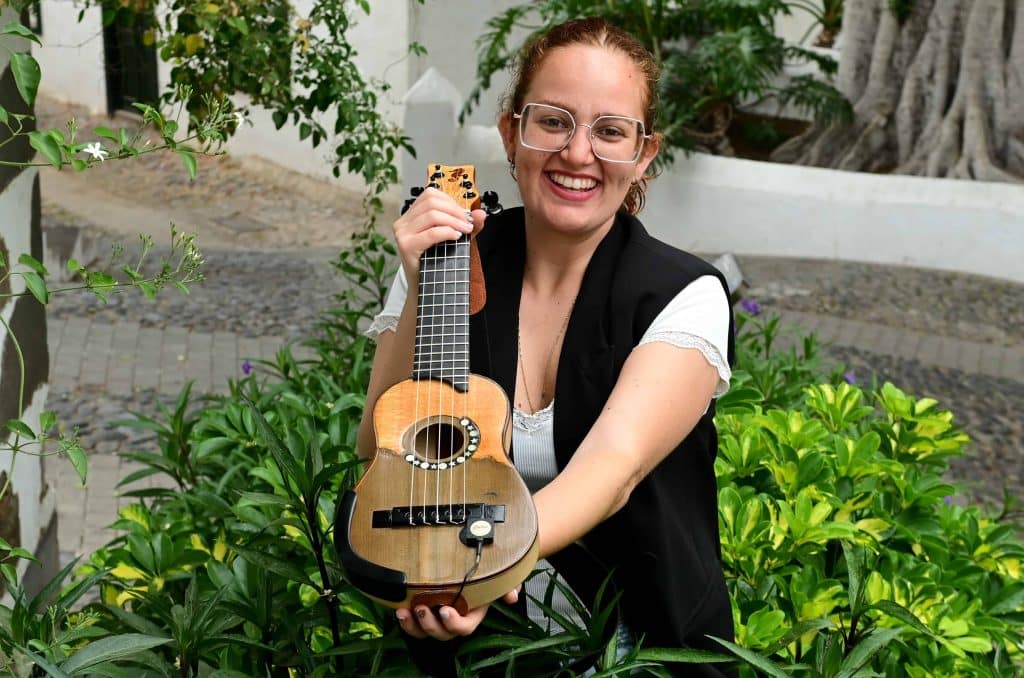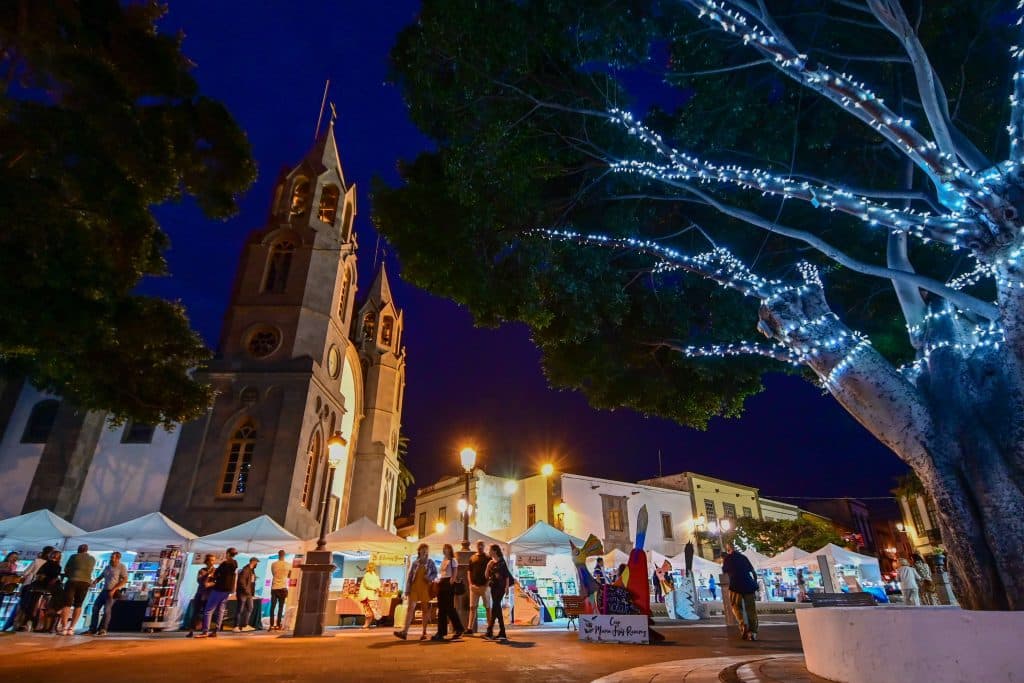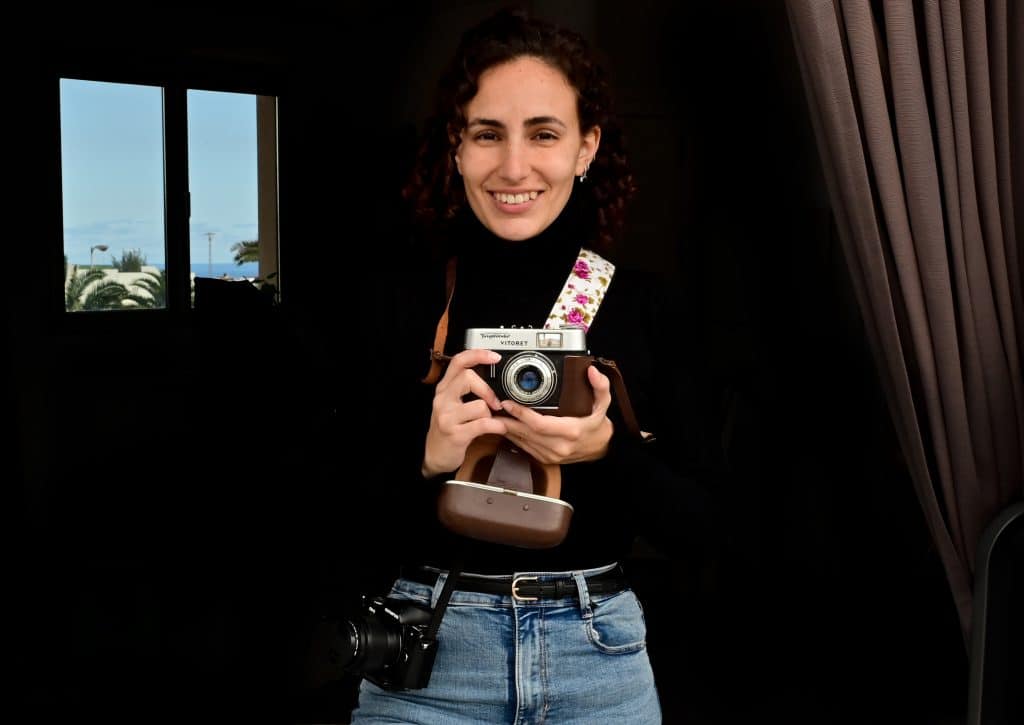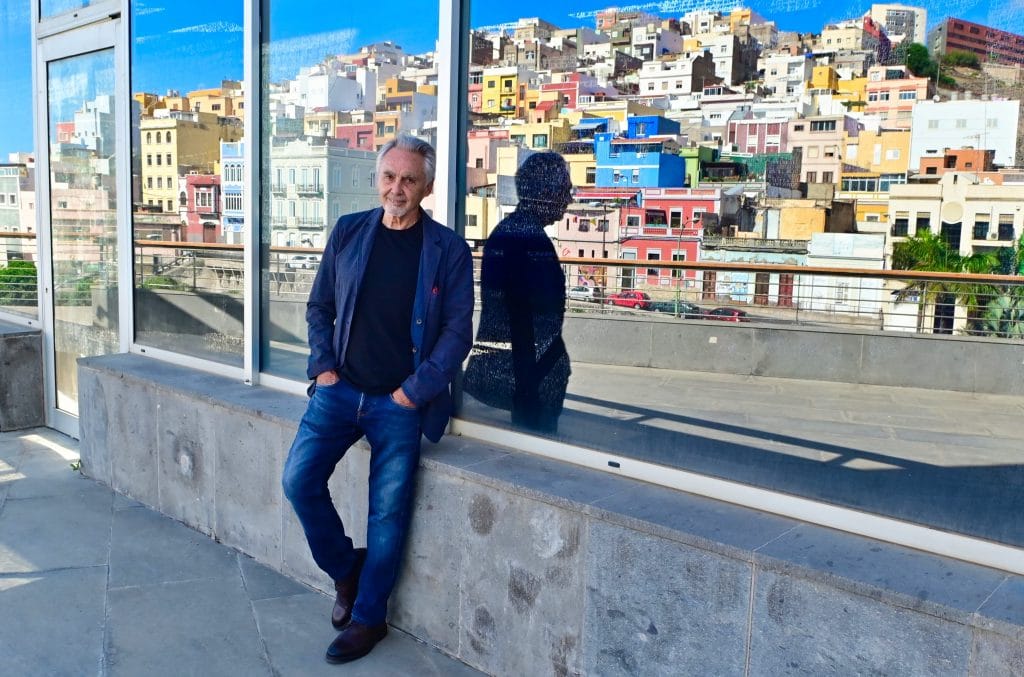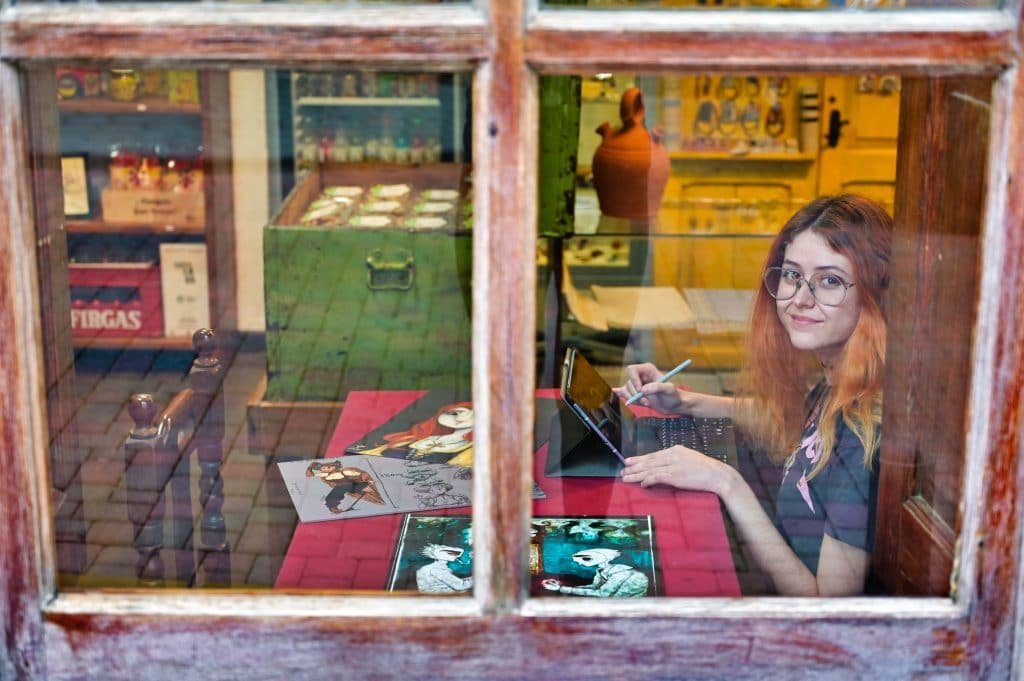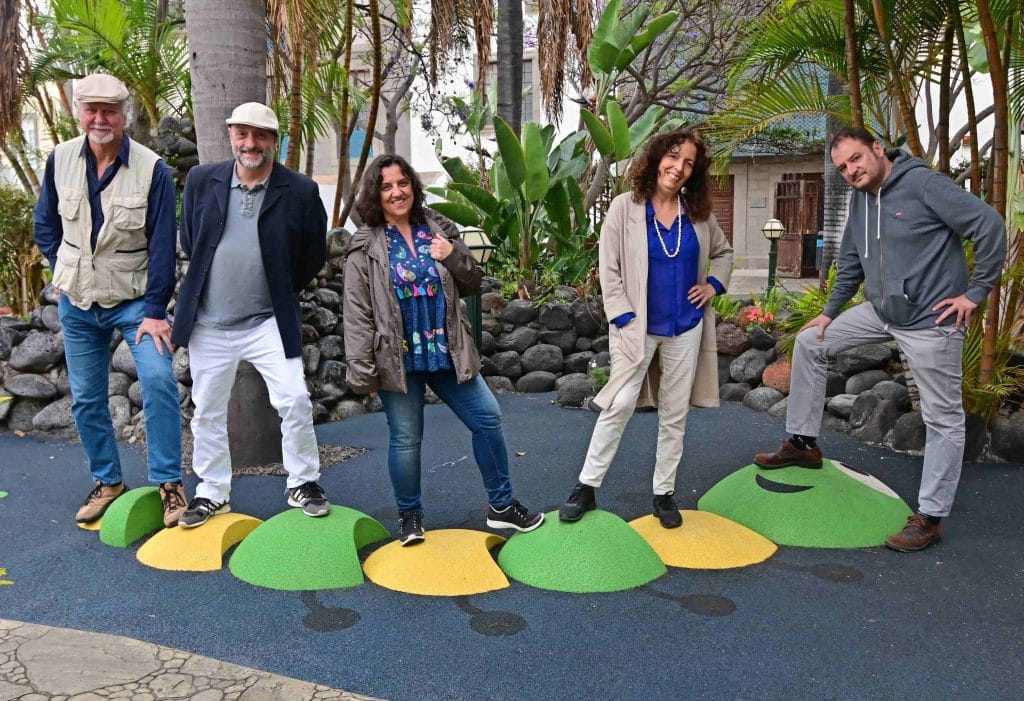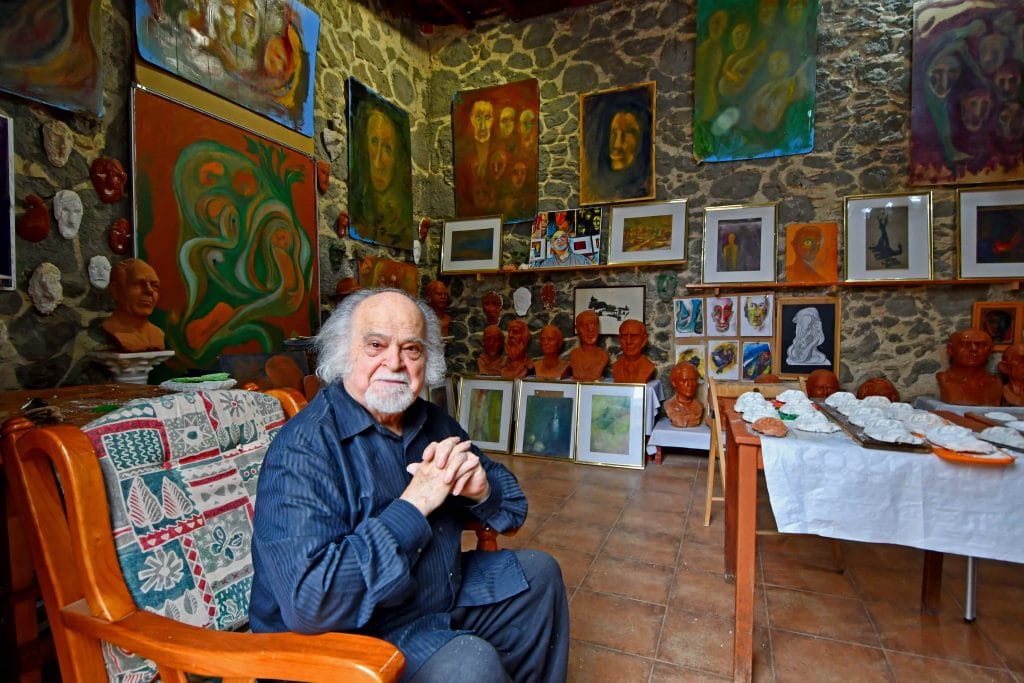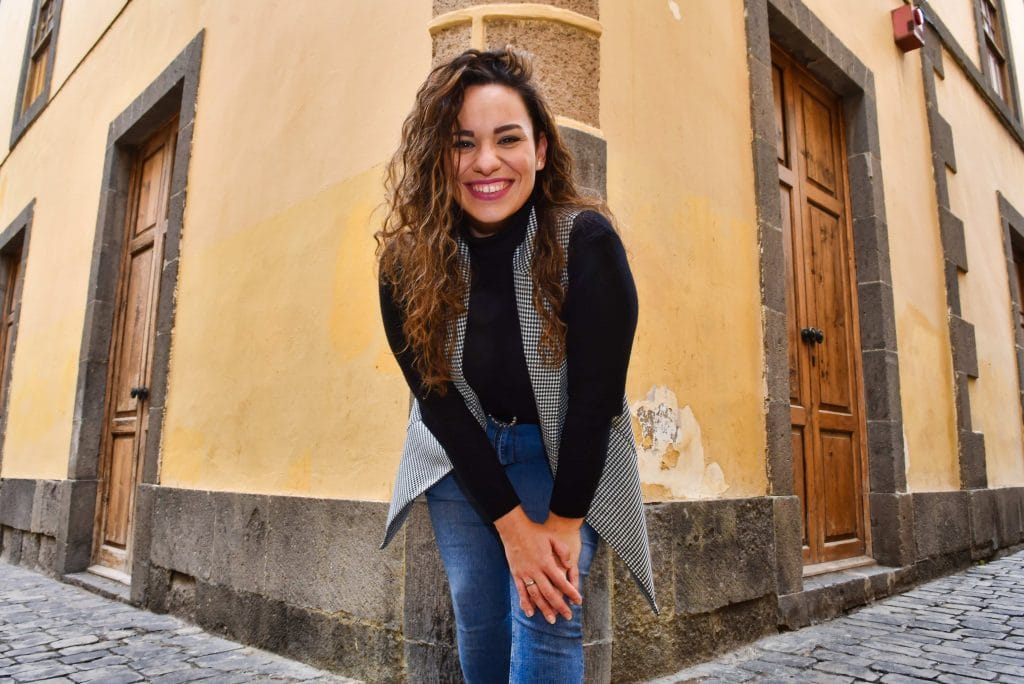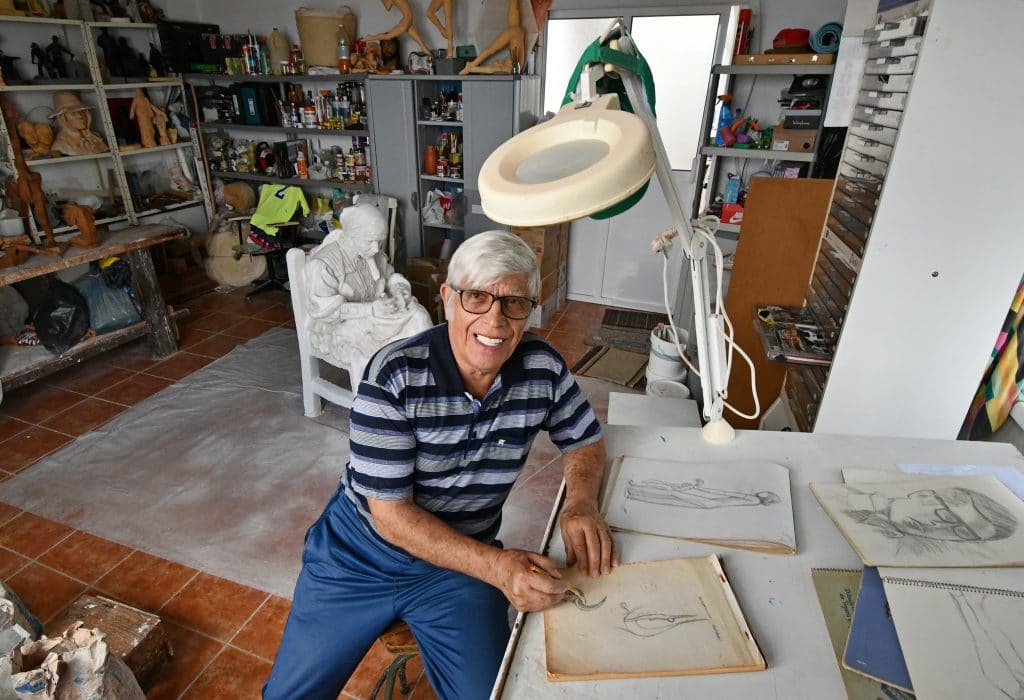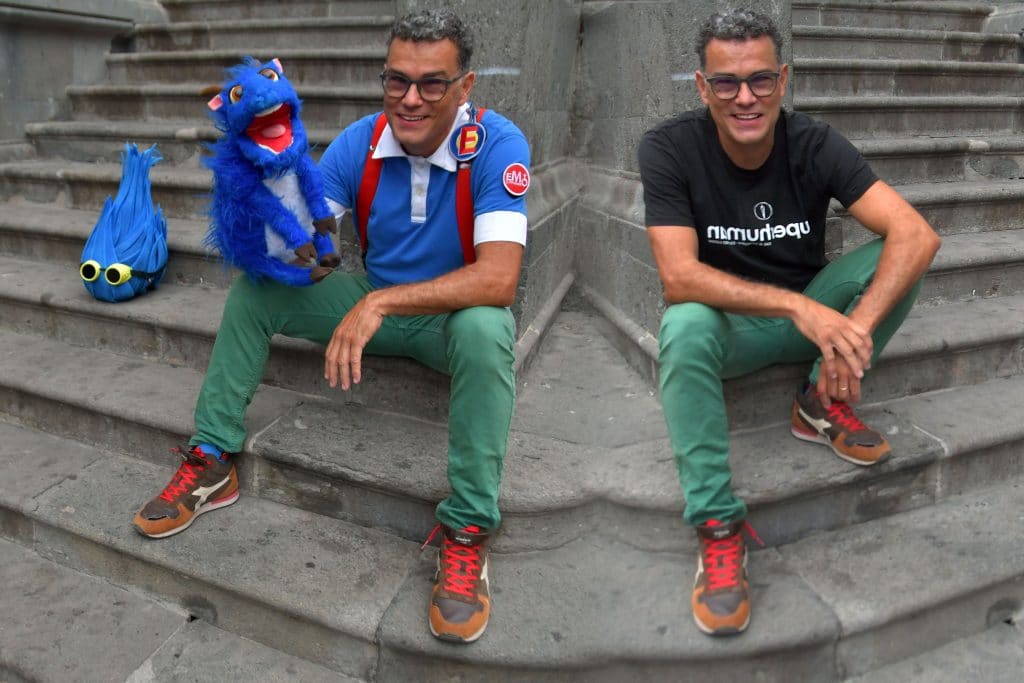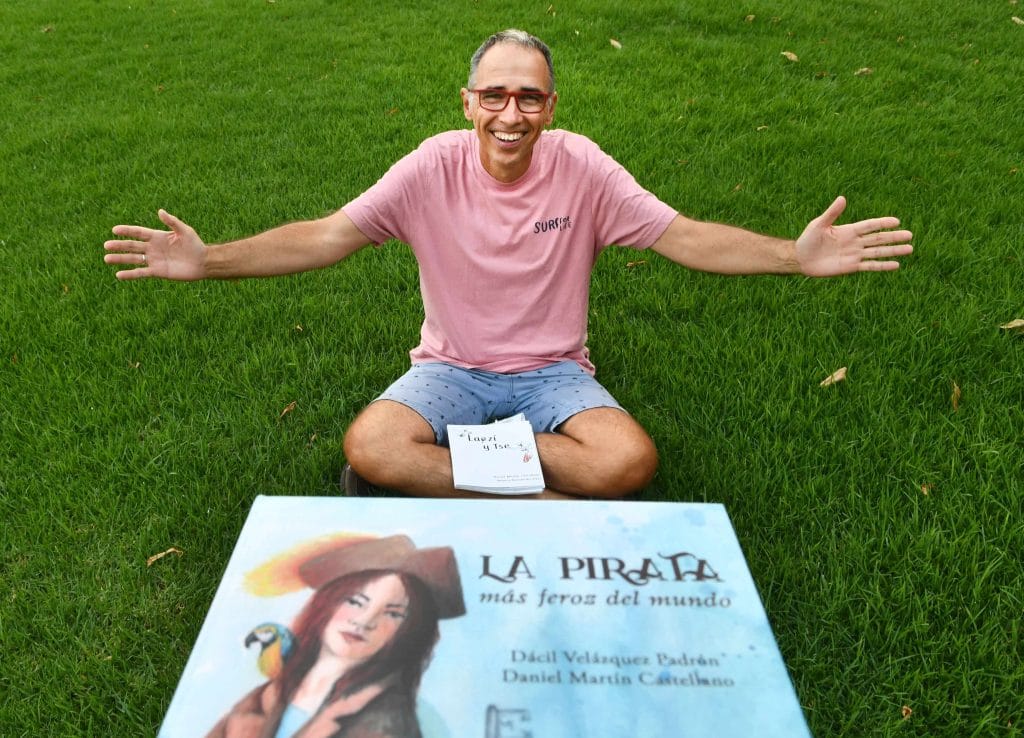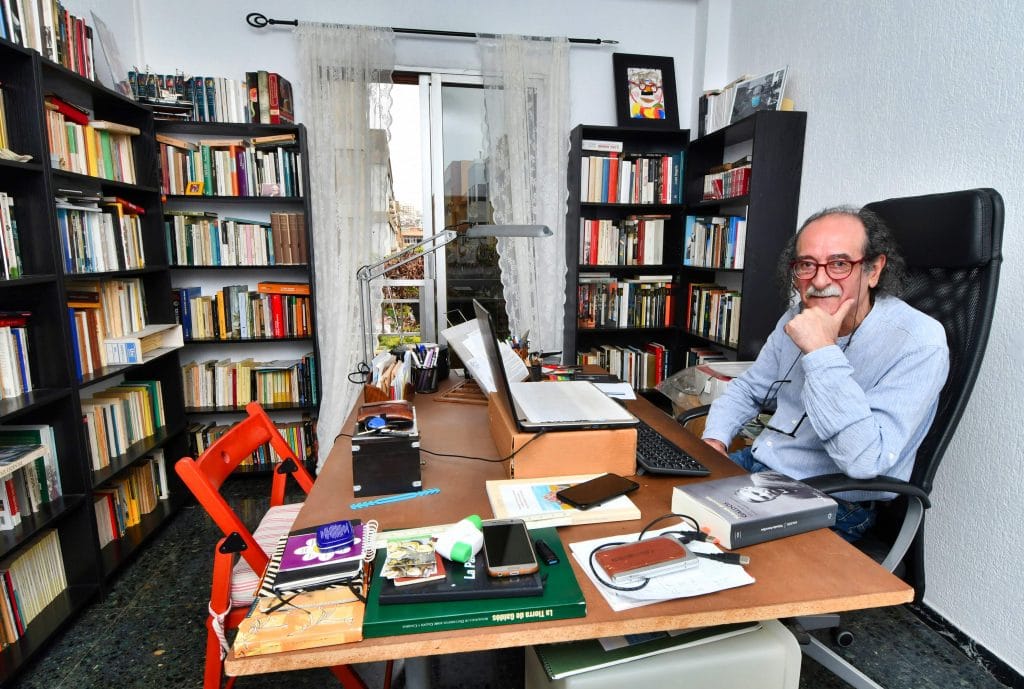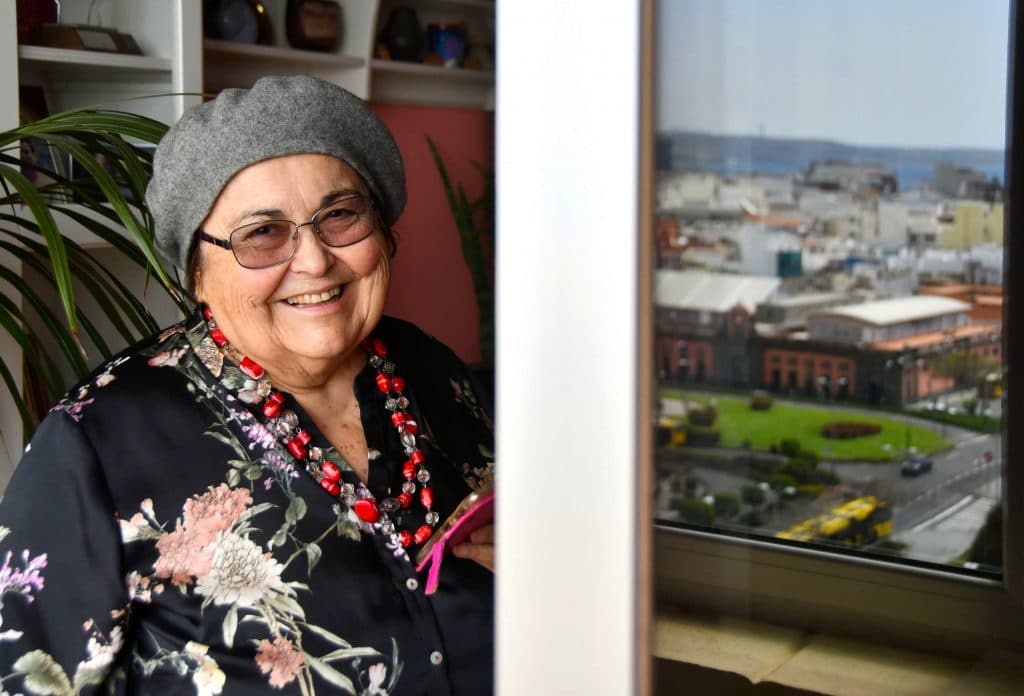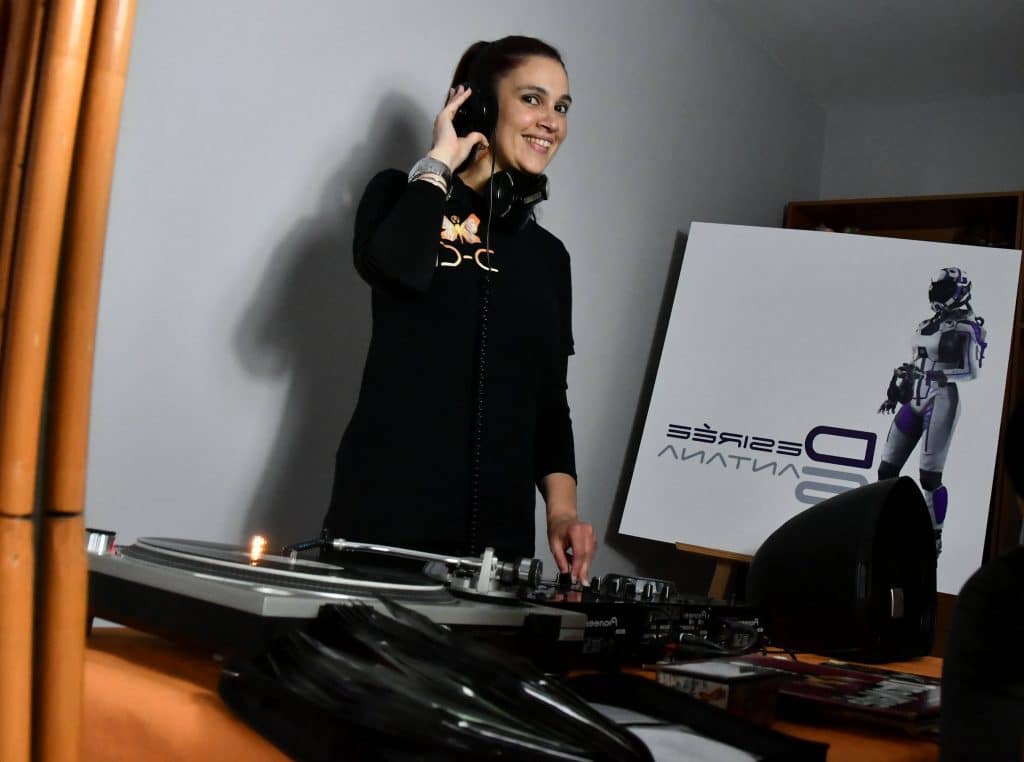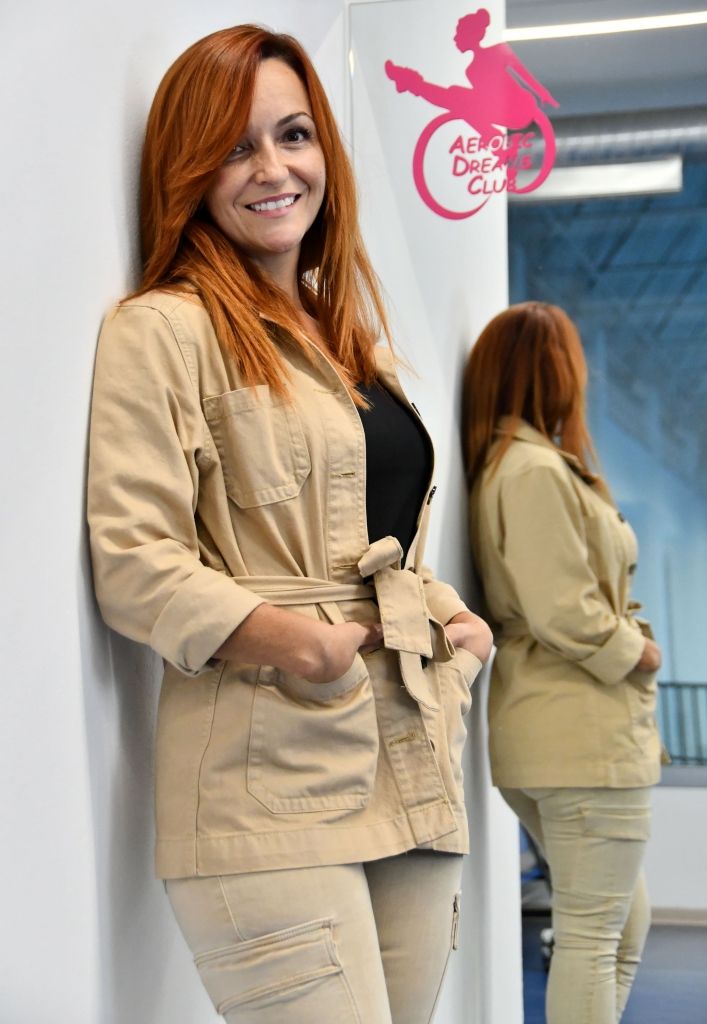Iván Arencibia Rivero, Restorative Conservative. Written by @loretosocorro
The passage of time, in the hands of Iván Arencibia Rivero, is like receiving with open hands a current of fresh air, in the middle of a heat wave. In his voice, in his gaze and above all in his calm we have been able to recognize a man who, grain by grain, is rebuilding paths, from yesterday and for tomorrow.
“There is no need to influence the work”-Iván tells us, while a ticking wall deceives the silence of the workshop- “The work has its author. I am merely its preserver, its restorer.” And since he later adds that the best restoration is the one that is not noticeable, from his criteria and taste, we want to know more about those cases in which the intervention of non-professionals has damaged some works.
“For us, conservative restorers, it is a mockery of society and people take it as a joke but it really destroys the heritage”
ACRE is the Association of Conservators and Restaurateurs of Spain, and yes… being a “restaurateur” has nothing to do with hospitality, although in recent years this French term has tended to be used, which creates confusion.
Until the role of conservator-restorer is made known, the work is done by artists and it was something very intrusive.
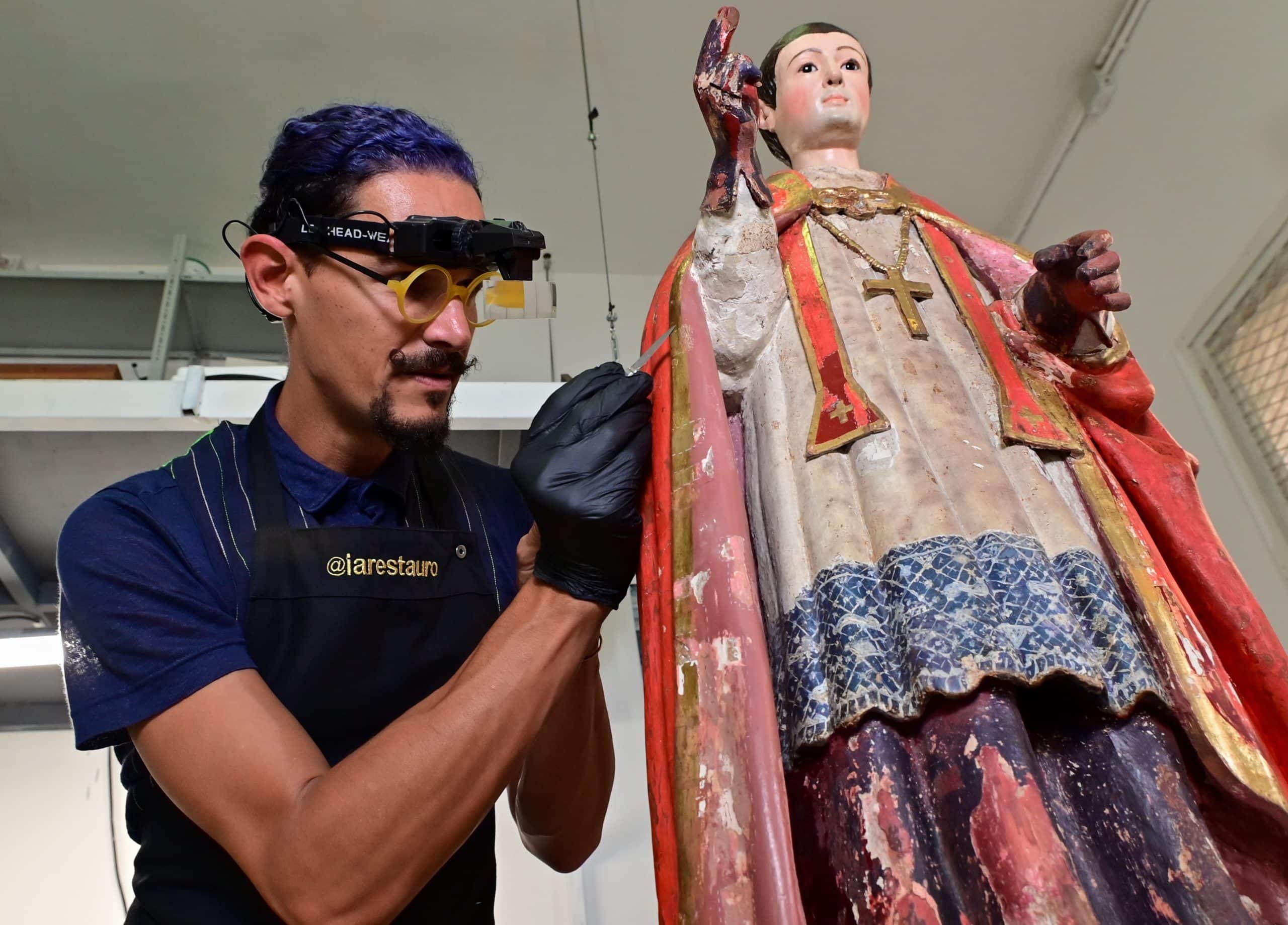
How should someone who wants to conserve and restore heritage have to act, what does someone have to have?
There is an intervention criterion but above all, you must be conservative. In a work of art that is one hundred and fifty years old, what matters is that it be touched as little as possible, because the more it is touched, the more the work suffers. The conservative has been specializing for years to avoid certain types of manipulations and interventions.
Iván Arencibia studied Fine Arts in Tenerife and then worked in Turin (Italy). “When I returned from Italy I was able to go to the Polytechnic University of Valencia where I formalized the experience acquired in Italy with a Master's degree in Conservation, which complements the Bachelor of Fine Art.”
Arencibia Rivero gives us an endearing story of a boy half and half from Valleseco and Guanarteme, who spent many afternoons in his grandfather's forge “I remember the sound of the cat with which he worked to fix the horse carts, in the industrial Guanarteme and how he warned me about the red cat with which he could crush my fingers”; That boy changed the landscape every Friday when he left school and went to the countryside, to Valleseco, his other half: “Up there, I don't know if the type of life teaches you a different point of view about the use and respect for the age of things. If you see a piece of tea and you are aware that the tree takes 150 years to create that tea, you already have respect for that wood... Maybe I grew up with more sensitivity to the environment and the material."
Iván, when did you start wanting to be a restorative conservator?
When I was little I buried dolls and dug, like in a site. I wanted to be an archaeologist. Once there was construction in my house and every summer, for three years, I was doing circuits in the sand of the construction, but... my godmother tells me that when I was 10 years old, when I was walking through the ravine and I saw a small table next to the container At night I told him... "well if we paint it we can use it to put the deck of cards and play on Sundays." She already had that thought of “we are going to be sustainable.”
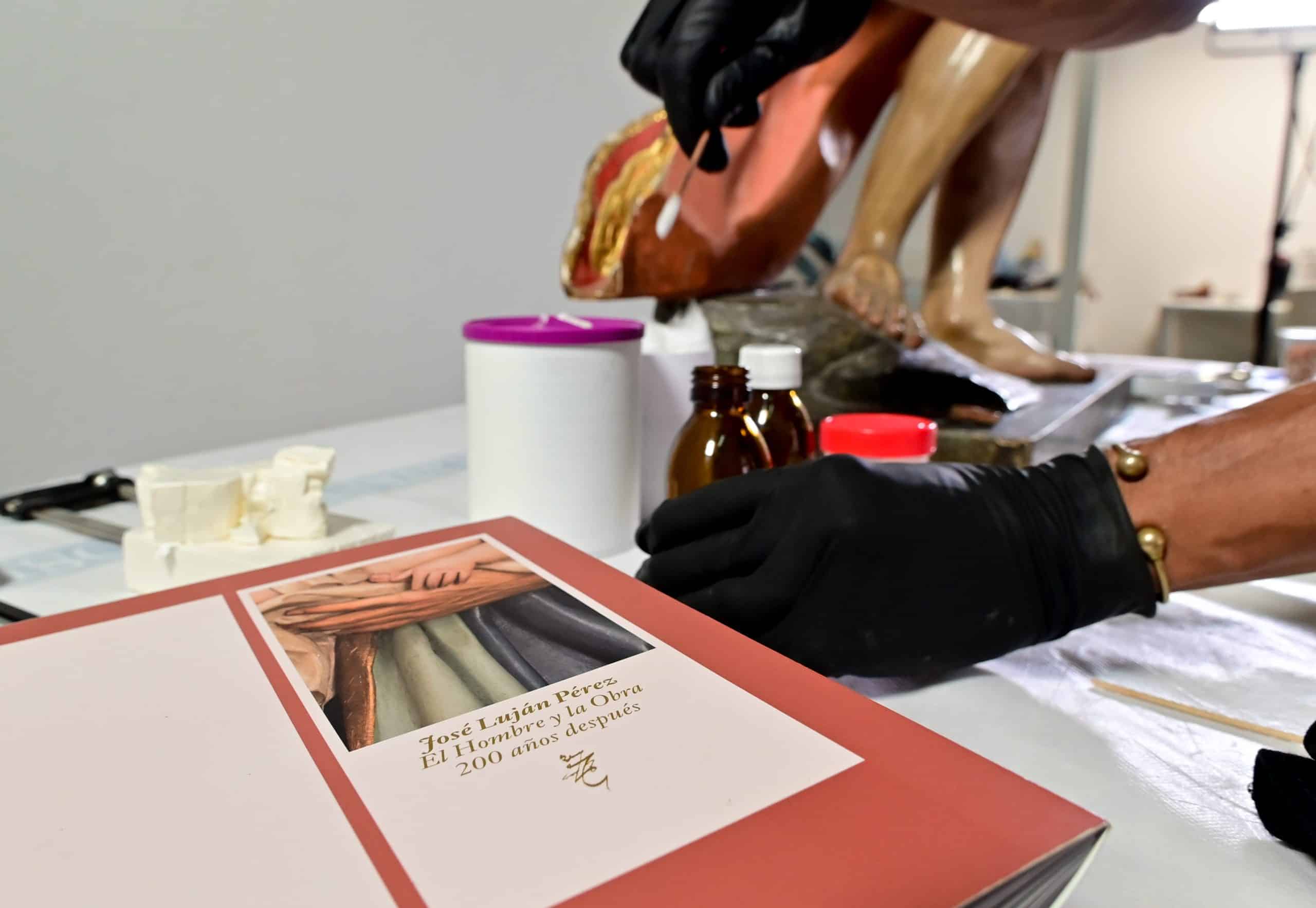
So, it wasn't a surprise to your family...
For my father yes because it was not a well-known concept. Studying Fine Arts was synonymous with being an artist and what I wanted was to preserve what artists have done and also the historical productions that ended up being works of art, such as the Cueva Pintada or Altamira...
Isn't a restaurateur an artist?
The artist wants to create. I am a mere observer, what interests me is not whether the work is by Velázquez, Goya or Ribera, what interests me is the subject matter. The problem that I want to avoid is that the matter degrades.
I still think that you have the soul of an artist...
But I don't think so. I get that relief, I satisfy that need, with conservation and restoration.
Do you remember your first restored works?
When I was studying, after subjects that were pure conservation theory, we began to work with prototypes of canvases that had been damaged, to see how we reacted and treated those damages. Then, I remember helping a colleague with a Virgin for two months to preserve the polychrome and then I worked alone on a painting of a Saint Anthony, dark with rusty varnish. As we began to clean it, the original colors and the boy in white with the little suit began to appear. It was not a spectacular work in terms of technique, but it was super endearing, because it was the first work that I was doing from start to finish...
Iván walks us through his workshop and introduces us to his creatures, naming others as if they were family members who have returned home after a vacation with him...
A girl and a boy just left me: a resurrected one and a painful one.
Do you get to love them?
There are works that have many interventions, up to fifteen, and you have to sit for many hours a day to restore.
We pass by a San Blas that is lying in one of Iván's work areas
This work is a nonsense of sculpture because as time has passed it has been manipulated so much... This man's problem - the San Blas- It was so much repainting that you had to remove it layer by layer by layer... and you can't use solvent, it's just with a scalpel, and that's quite hard work.
We now know that the San Blas had fallen on its head and suffered structural damage and its eyes popped out. “This dent here was always covered with a repaint, but the damage was internal, every time the paint hardened due to fluctuations in temperature and humidity, it was split again and painted again. In the end, a deformation of the face was observed because paint was put on top of paint…”
What intervention are you carrying out with this work?
It consists of removing all the varnishes and treating the damage to the eye. I inject glues and adhesives so that the polychrome settles and with specific temperature and weight interventions I reduce the damage. Correct damage and prolong conservation over time. You may not need another intervention for 150 or 200 years.
Where did you make patience?
I always say - smile - that my profession is a specific career to cultivate patience.
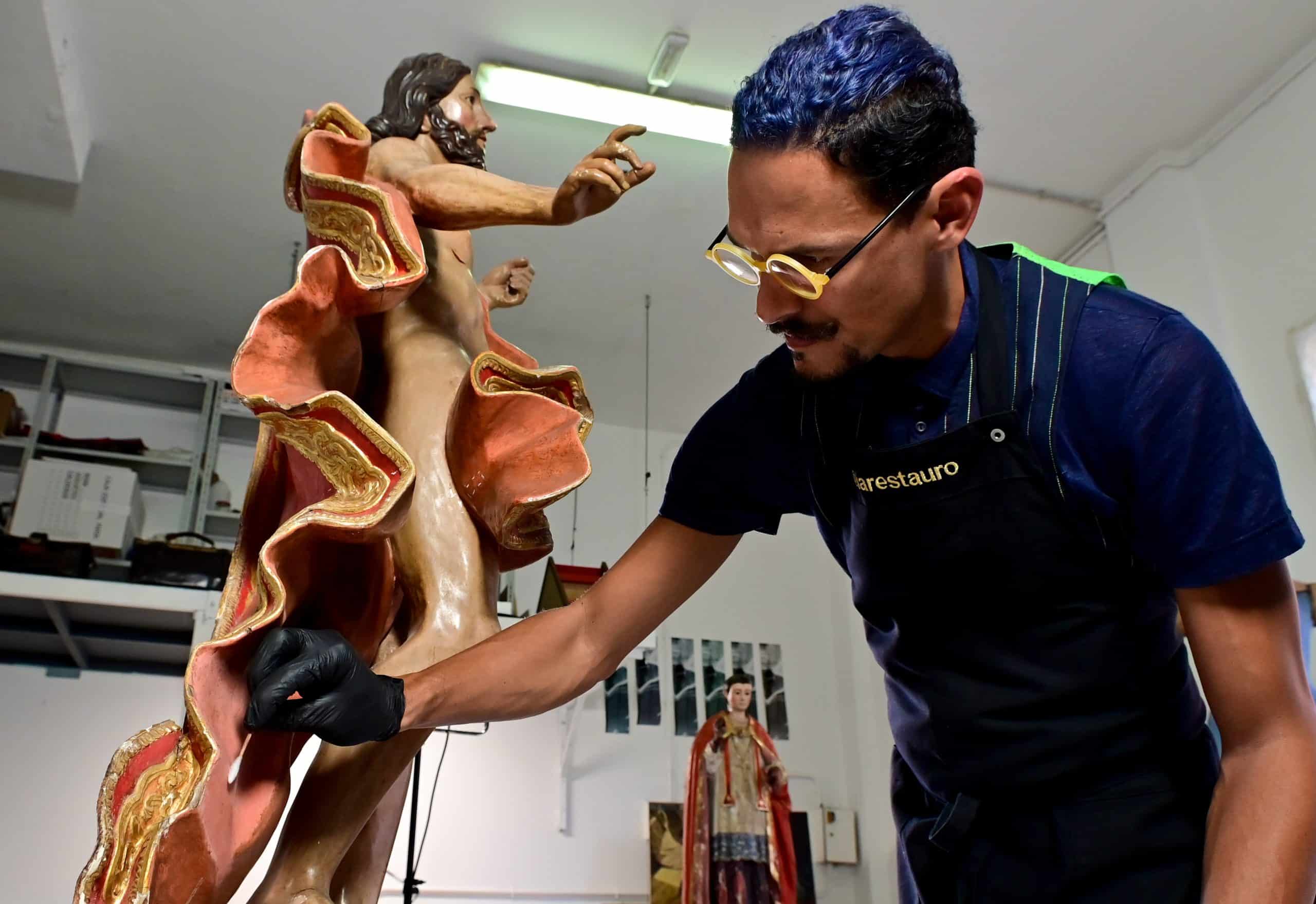
We leave the figure of the saint behind and while Iván grabs a magnifying glass he shows us a work that he has in quarantine. It's a painting kept under a plastic curtain “Because there are bugs in the wood that are eating it.” He has managed to heal it with injections and vigilance as therapeutic as that of any ICU nurse. In another four days he will examine it again“At night I like to listen to them with the stethoscope to know if they are still eating or not.”
Our voice sounds clear and louder under the tent-shelter of the painting. We leave the pocketed space and the wall clock sings harmoniously again. Iván explains more about the conservation of the work.
Quarantine is going one step ahead. Preventive conservation is the best and most effective way to avoid what could happen. Then, after the work leaves the workshop, there are periodic inspections and advice is given to the owners.
And we continue between pieces that talk about the passage of time, manipulation and evolution...
This other piece has spectacular gold quality. -It is a column from some Venetian chapel that has come into the hands of a Canarian collector- This part is clean and shiny, I run the glove and look at the reflection it has and this other part is still dirty.
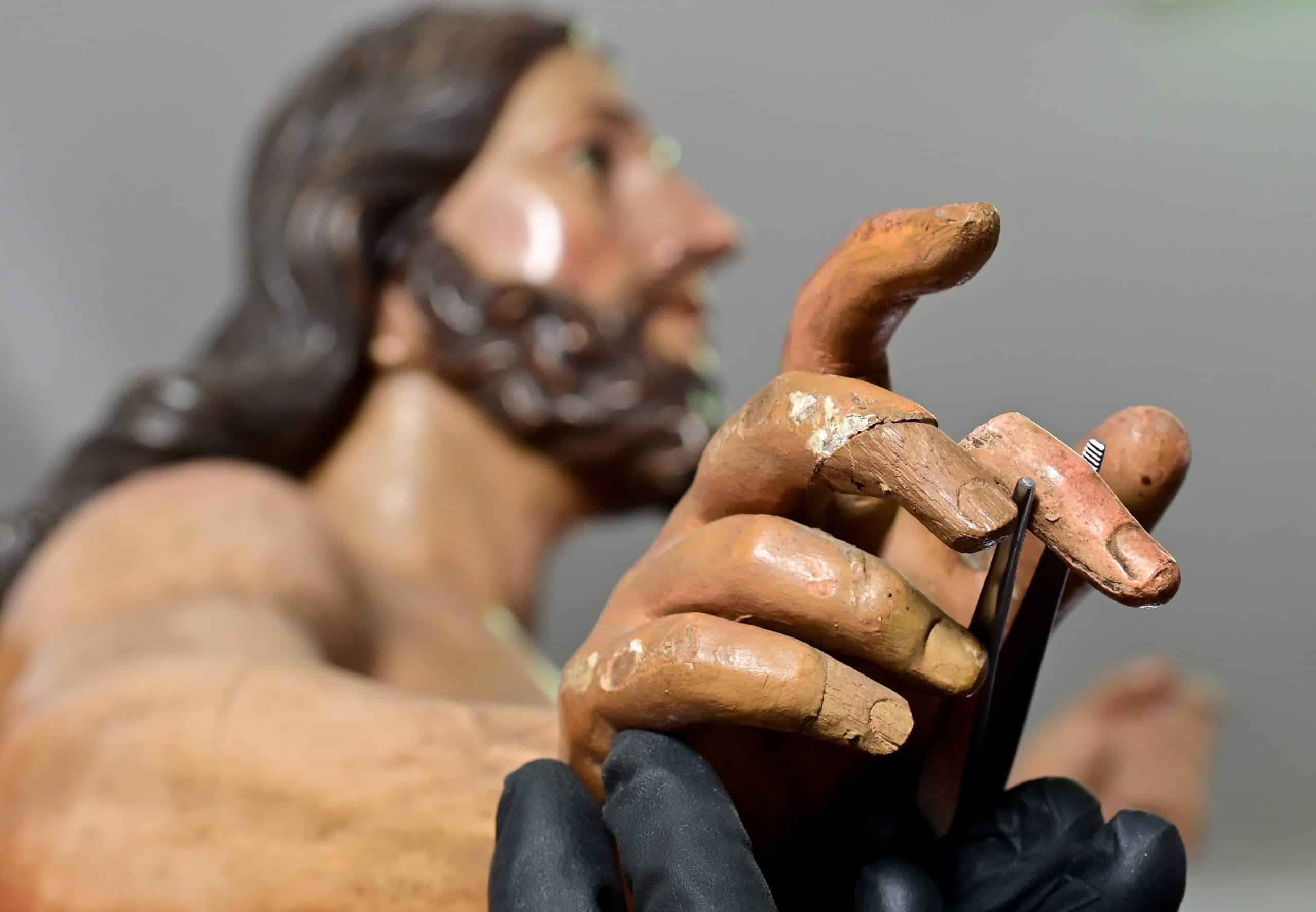
When Iván speaks, he transmits images that only passion knows how to spell: "Imagine that chapel illuminated with candles, how the light they give off moves and the effect is that the gold is constantly vibrating, It's an eeffect of reflectance that what it does is draw your attention and you feel self-conscious… That was what the artist wanted when creating but over time that distortsúto ".
Next to a table from the XNUMXth century we discovered that they were actually two tables glued together and that they split in the center:“When the paint falls off, they repaint the board, but it wasn't just the little spot that was deteriorated but the entire paint.” There has been an evolution in the intervention and/or restoration criteria throughout history. With ultraviolet light it shows us the original and what is later. The tones of the mineral paints altered the original paint and very different tones came out.
Can you know how each work is done before intervening on it?
We do stratigraphy, which is taking a minimum sample with a scalpel and we send it to be analyzed and this is how the strata are seen, like the layers of a cake. This gives us the chemical composition of the colors, the thicknesses in microns, the age...
And later?
We clean, sanitize and view the old work as is, giving it a layer of varnish to hydrate it, and to perform the aesthetic intervention.
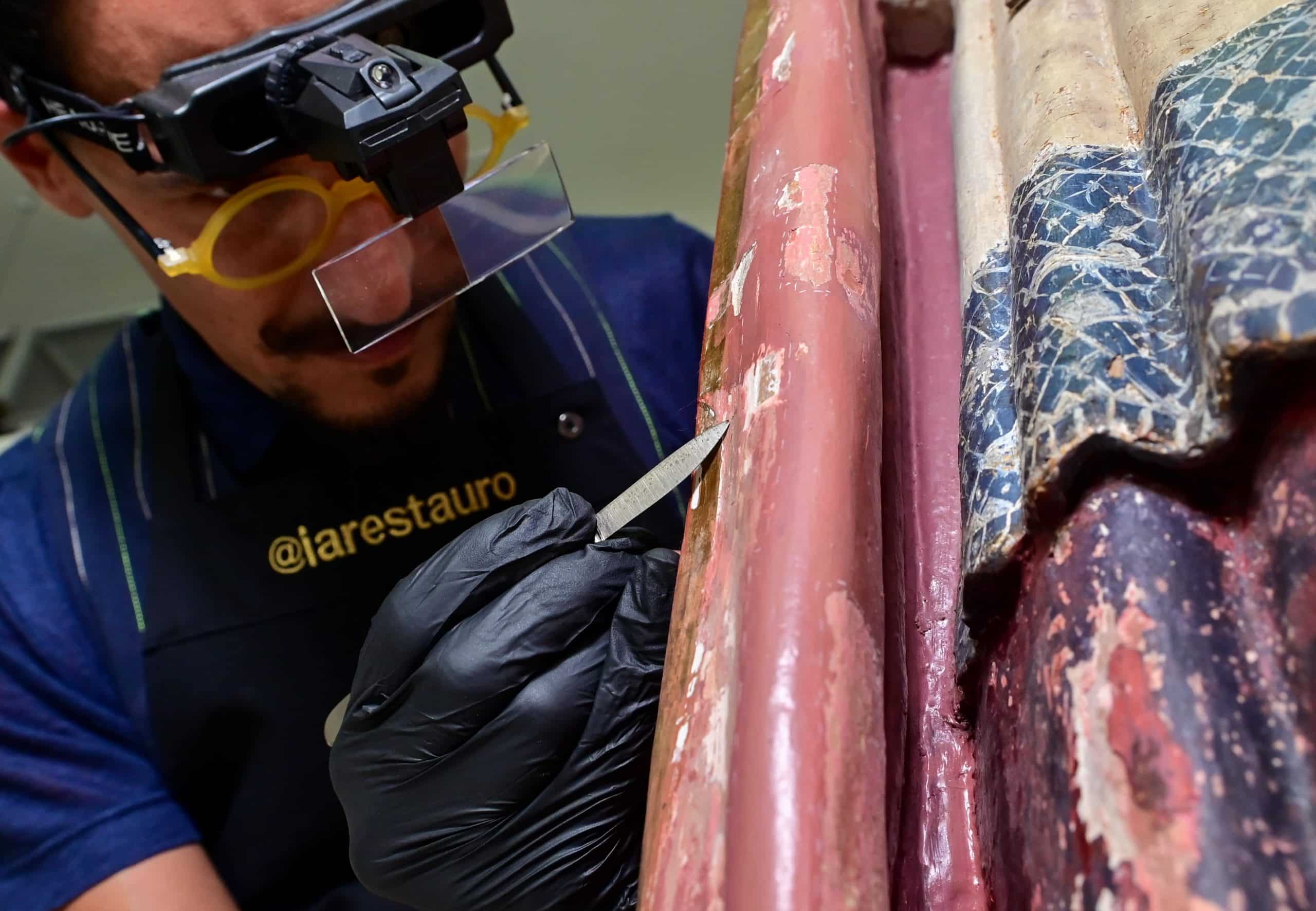
Arencibia Rivero has worked in Malta, Italy, Valencia, Lanzarote, Tenerife... with works by César Manrique, among others.
Each work that arrives at Iván Arencibia's workshop is a world of information: "Like opening a file with all the information that the work has accumulated over time."
After listening to it, we are sure that every restoration deserves to have an explanatory documentary…
“There are studies but they take a lot of time, although they provide spectacular information about the patient.” -the works- but it is currently out of budget. Research is being promoted from the public sector but it is not good for a private collector either because that slows down intervention a lot.”
How is a restoration undertaken by the Administration?
A project is always required and that avoids the intrusiveness that ends up destroying an image. The project goes to the Joint Commission where representatives of the Government of the Canary Islands, Island Council (Heritage) and Bishopric meet. The projects, which must be signed by a qualified person, the proposed treatments, the budget are analyzed and once approved by the Joint Commission, the restoration is carried out.
Is the work you do with the works ever shown to the general public?
From the Cabildo, when a work is restored, that work is presented, yes it is pure preventive conservation. And it is a super educational way to teach people the restoration process. I make a powerpoint and I explain it so that you can see the process; for example: the crucified man who was intervened in Teror. People were happy and also know why a restoration is worth what it is worth and why it takes nine months of work. I assure you that after nine months I already knew where the cracks were and where the wood was going to move... even with my eyes closed.
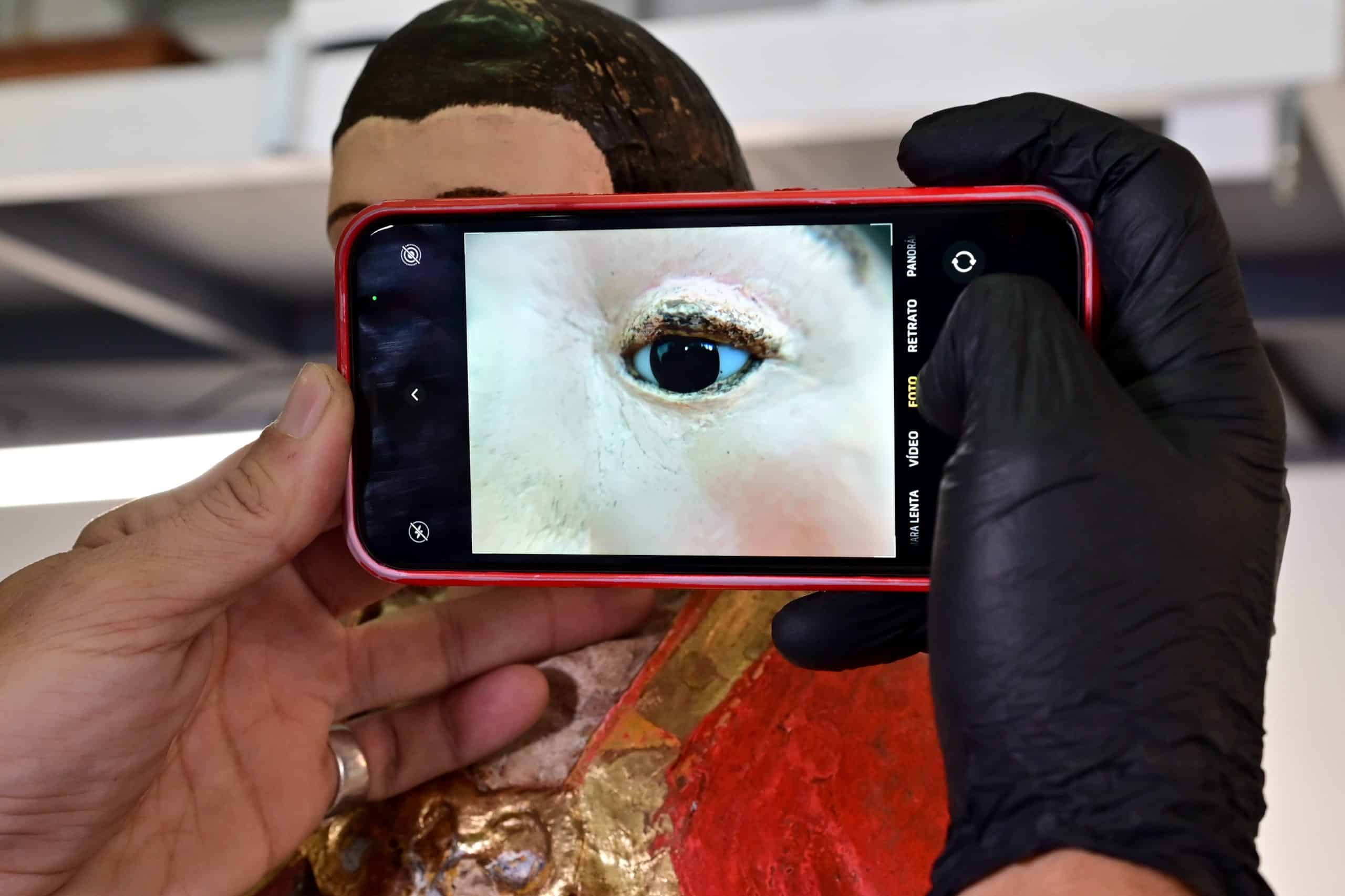
How does digital help?
I'm not very digital. I prefer to write things down but digital support is valuable: it helps to do three-dimensional reconnaissance, scans, see how the work was a month or three months ago and record the problems it had. It is helpful to compare before or after photos, take x-rays or CT scans.
How do you dream of your future in this world of heritage conservation?
I would love to be able to make people aware of what we are, to stop for a moment when they go to a museum or to see a religious work, whether you believe it or not, and to appreciate that it is the historical product of a time where everything was made by hand.
How can it be done?
Starting in the same schools and institutes, and thus we would avoid that when we went to see a monument we would find the typical María wants to Pepe or Pepe loves Juana, written in the Barranco de las Vacas, carved in the Roque Nublo or graffiti in the Bentayga. There is no need to be damaging a natural monument that for our ancestors was a sanctuary. The social value of cultural assets must be enhanced.
Like Iván we believe in Salt of the Atlantic that «We must break a spear in the sun and be optimistic» because "Cultural assets, as a society, come to us as legacies from previous generations and so we must bequeath them to future generations in the best possible conservation.ó“n possible”
Works intervened that you admire?
At the island level there are some works with an exquisite intervention and they are the sculptures from the Era of Mota. They are flamenco and were in Telde. They later went to a private collection. There are pieces missing from the sculptures, but thanks to that you can see how old they are, the construction system of the works, the thickness of the gilding, how the assembly of the wood was carried out... The passage of time, if taken a knock, a wrinkle that appears on the work... that enriches the piece because it gives an idea of the age of the work.
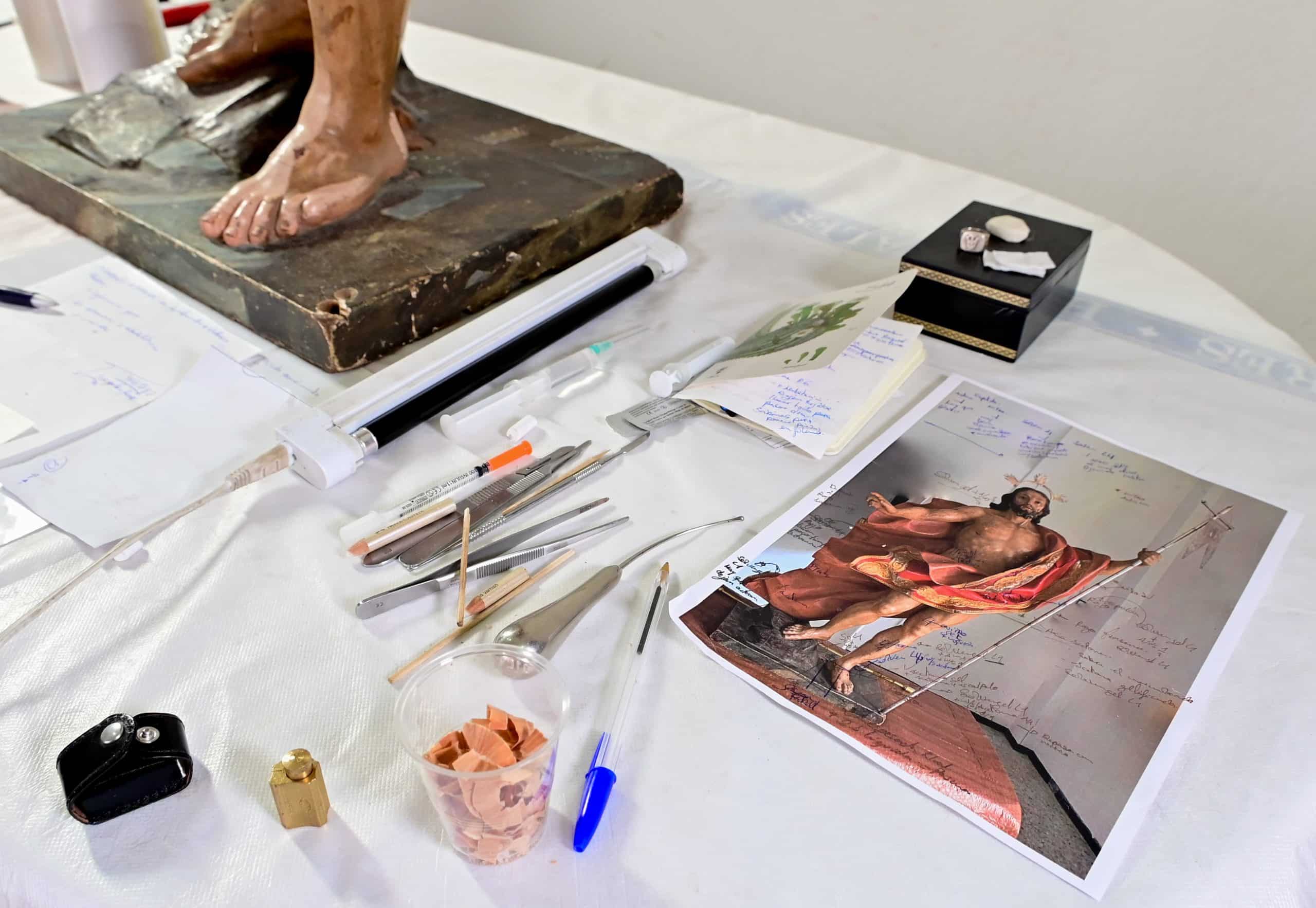
The work that has most excited you to restore…
A Saint Jerome by Giuseppe de Ribera, the Españoleto. He is one of my favorite authors and I had the opportunity to restore his work while working in Italy. I remember him fondly from the experience of seeing him enter the workshop and say “that's a Ribera”, without even knowing the file or anything else, but simply from seeing the brushstroke. It was a luxury for me to be able to intervene and see first-hand the brushwork, the type of materials he used and so on.
Iván, we want to see at least three works that you have restored on the island…
Well, you can visit San Bartolomé de Fontanales, in the Church of Fontanales. That was the first work I restored for the Cabildo. And it is enriched by a legend where they say that two Saint Bartholomews were made. It turns out that Luján took both to Fontanales and a commission from Tunte walked to choose one and they decided on the largest and largest, strongest. When they returned to Tunte it seems that the local people said that they wanted the other San Bartolomé, the little one, but despite the discussion and trying to make the change, the decision had already been made and the smallest one stayed in Fontanales.
How interesting! We're going to go to Fontanales for sure... two other works?
Well, the San Pedro Mártir in Telde, which is spectacular, and in Las Palmas de Gran Canaria, a mural by César Manrique that is in the Club Náutico, which is also a BIC building (Asset of Cultural Interest).
The job of a restoration conservator is a hard, lonely job with a lot of responsibility. “We work with super tight times, from Sunday to Sunday. As a professional I work with a regulated criterion and although there will always be opinions, I explain everything with the methodology proposed and carried out and with whatever is necessary, to raise awareness of the hard work of research and restoration of a work of art and that It must be done by a restorative conservator.”
We put an end to the motto used by this man with the everlasting smile. "U“A people without heritage is a culture without voice.” So resume or starts all the presentations because it is something that worries you “I'm interested and I want anyone who attends my talks to think about it.”
